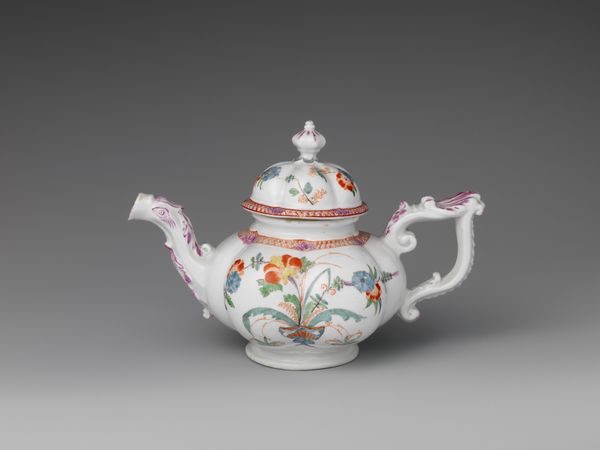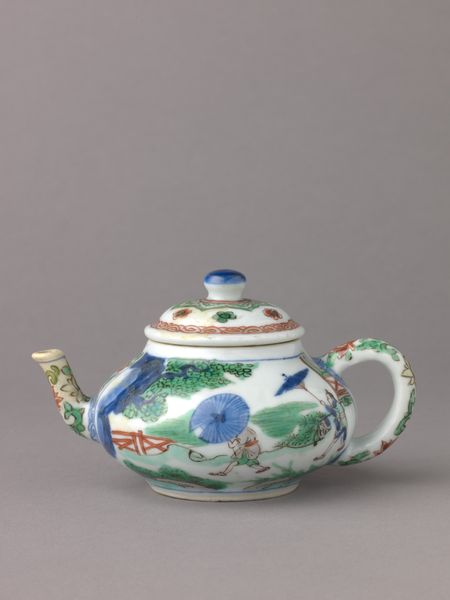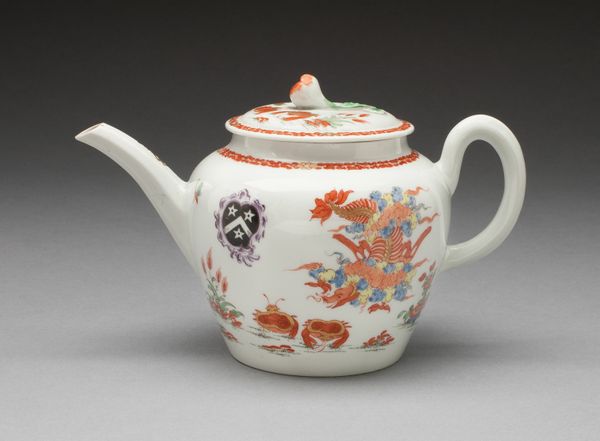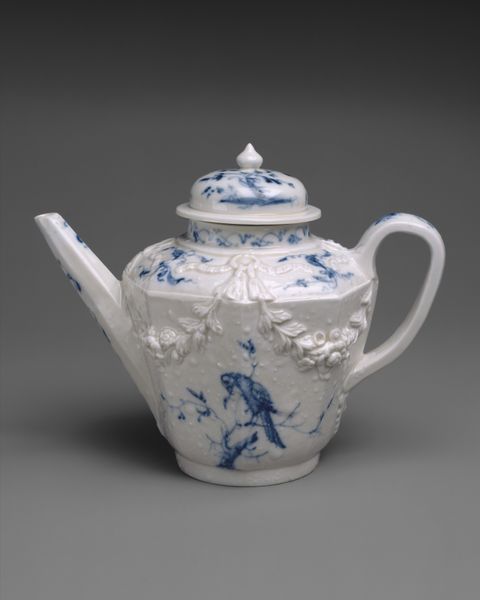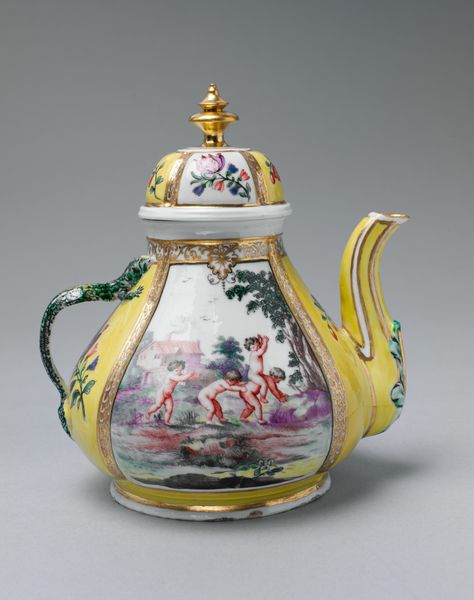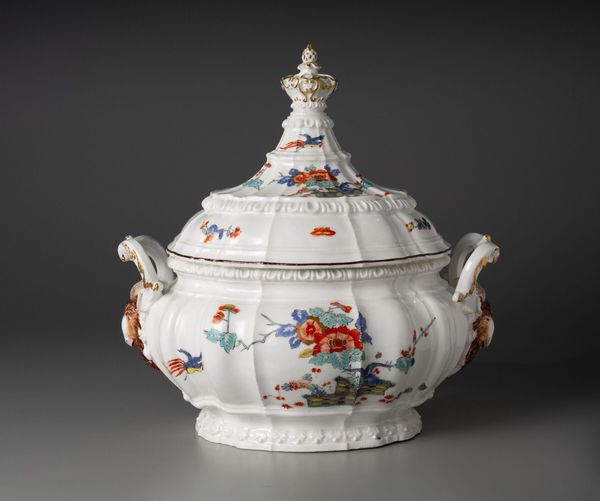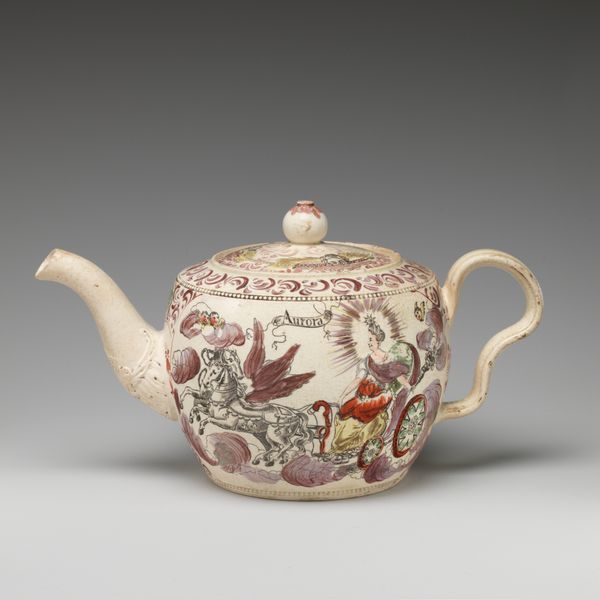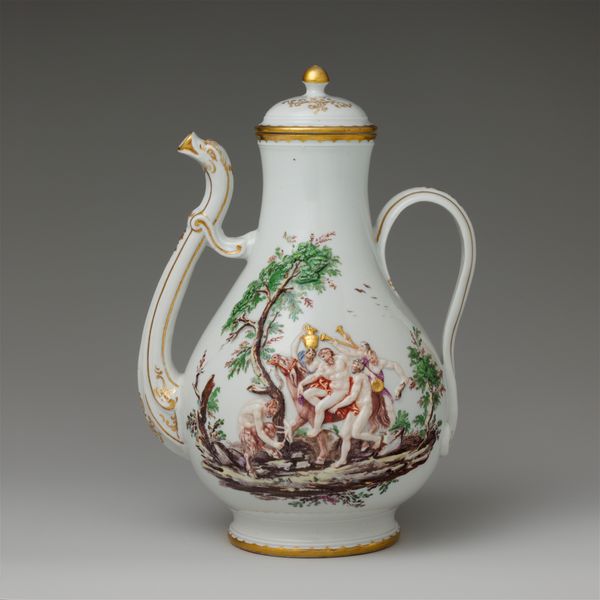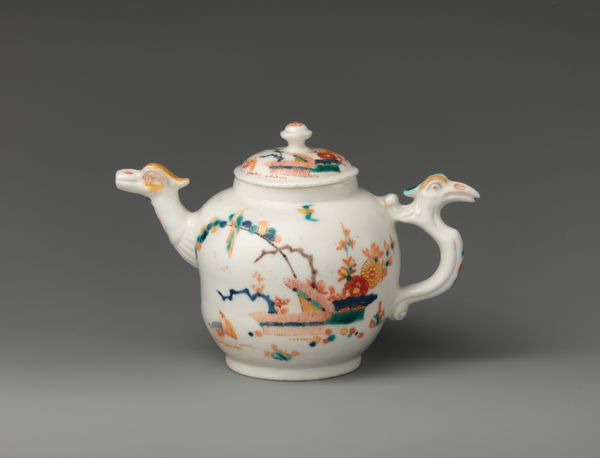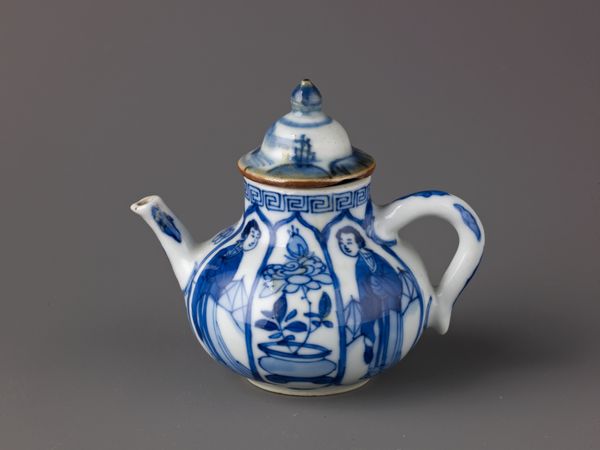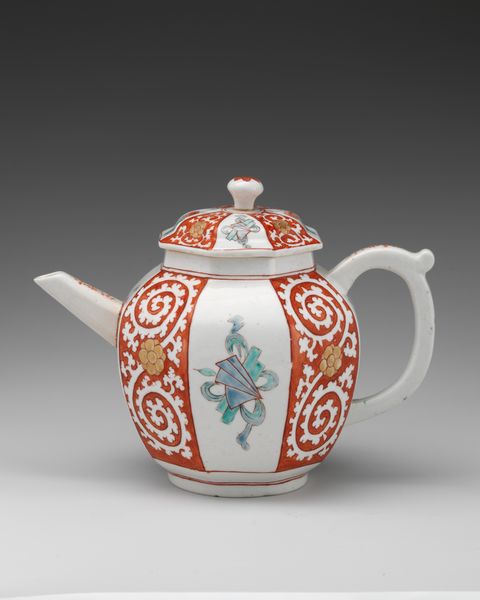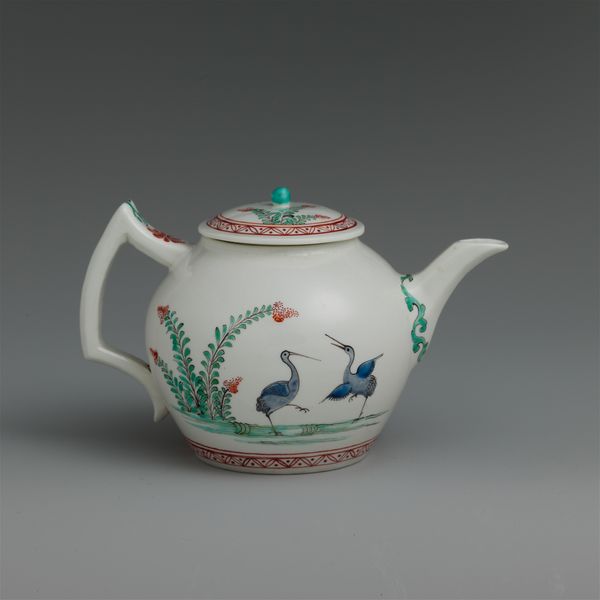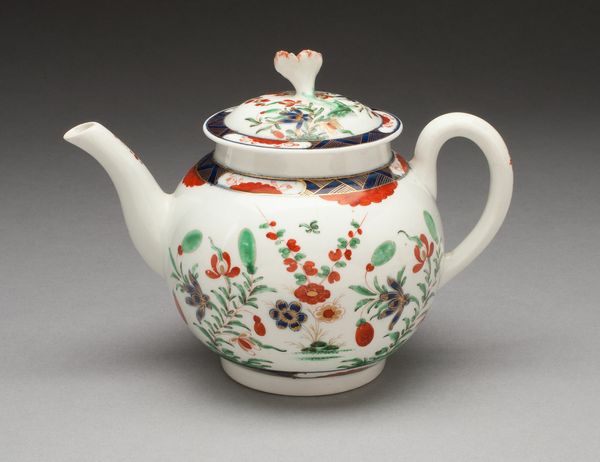
ceramic, porcelain, sculpture
#
animal
#
asian-art
#
ceramic
#
porcelain
#
sculpture
#
orientalism
#
decorative-art
Dimensions: Height: 6 3/4 in. (17.1 cm)
Copyright: Public Domain
Editor: We're looking at a porcelain teapot, made sometime between 1765 and 1775. It’s currently held at the Metropolitan Museum of Art. The bright colours and fantastical animals give it such a whimsical feel, what's your take on it? Curator: Well, beyond its undeniable charm, I see a complex dialogue about trade, cultural appropriation, and the rise of Orientalism in Europe. What appears as whimsical is also a product of specific historical power dynamics. Editor: Cultural appropriation? I guess I hadn't thought of it that way. Curator: Consider the source of the porcelain itself. It likely imitates Chinese or Japanese styles, highly prized commodities brought to Europe by trade routes, often established through colonial ventures. The “exotic” motifs and decorative arts like these fueled fantasies about the East, shaping European identities in relation to perceived “others.” Does that make you see it differently? Editor: It does. I was focused on the object itself, its aesthetics. You're bringing in the whole global context. What about the choice of animals and flowers? Were they just decorative, or is there more to it? Curator: These choices weren't arbitrary. They were a deliberate deployment of chinoiserie – a European interpretation of Chinese artistic traditions – filtered through the lens of European aesthetics and desires. By understanding this context, we can begin to unpack how seemingly innocent decorative objects played a role in constructing and perpetuating orientalist viewpoints. Editor: So it's less about the beauty of the teapot and more about what it represents in terms of cultural exchange and power? Curator: Precisely. It's about understanding the forces that shaped its creation and reception and examining what these historical objects tell us about ourselves. Editor: This gives me a lot to think about, thanks. Curator: And it is through thinking, and conversations, that objects speak to us in ever more complex ways.
Comments
No comments
Be the first to comment and join the conversation on the ultimate creative platform.
